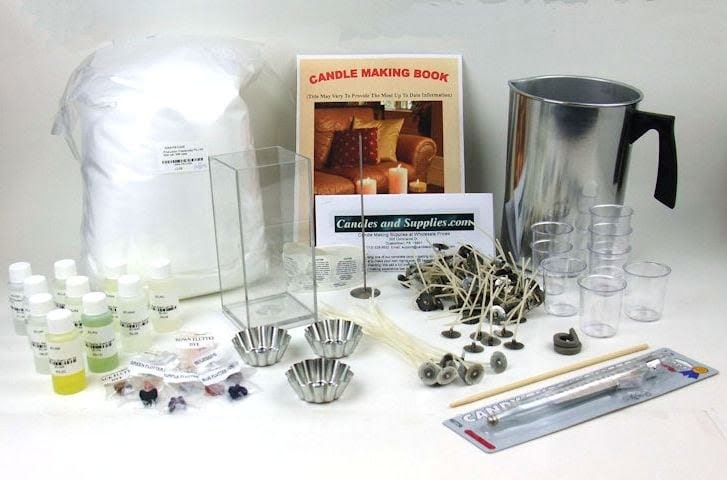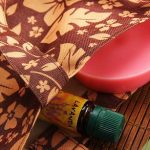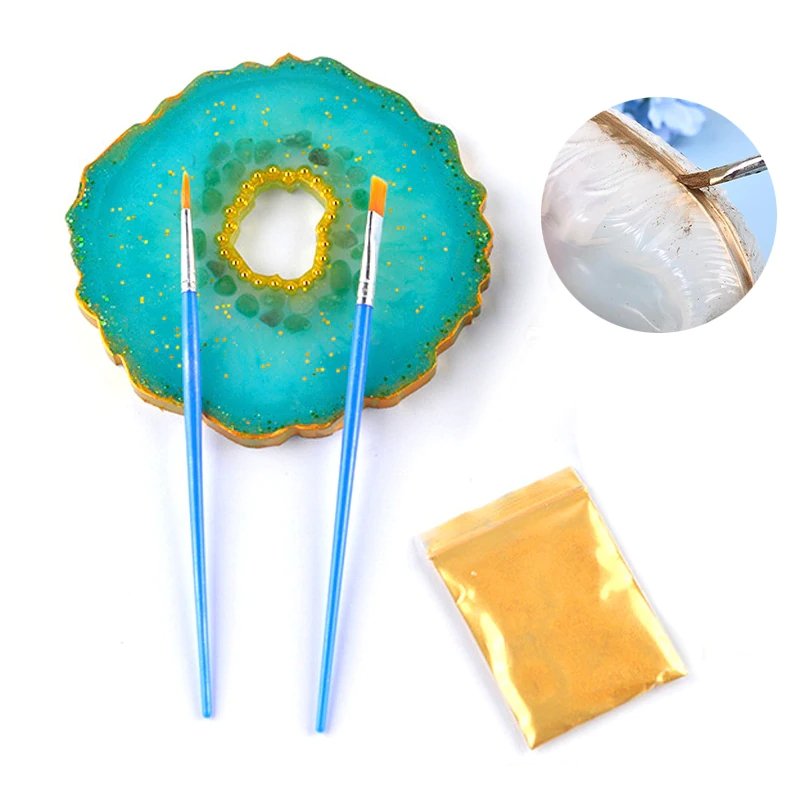Beeswax candle making in 1700 America was a vital aspect of early colonial life, with the production and use of beeswax candles playing a significant role in the daily lives of settlers. Beeswax, obtained from honeybees, was a valuable resource that was utilized for various purposes, including the creation of candles for lighting and illumination. This article explores the process of beeswax candle making in 1700 America, examining its importance, techniques, tools, and impact on early American society.
The significance of beeswax in colonial America cannot be understated, as it served as a primary source of light before the widespread availability of alternative lighting methods such as kerosene lamps or gaslights. The demand for beeswax candles spurred an industry that had a profound impact on both domestic life and economic development in early America. Additionally, the craft of beeswax candle making emerged as an essential skill for many households and communities.
Harvesting beeswax in the 1700s required specific knowledge and techniques that varied depending on geographical location and available resources. The process involved not only collecting wax from beehives but also purifying and molding it into candles. The resulting product provided an essential source of light for homes, businesses, churches, and public spaces across colonial America. In this article, we will delve into the methods used to obtain and prepare beeswax for candle making during this period.
The Importance of Beeswax in Colonial America
In colonial America, beeswax played a crucial role in daily life, particularly in the production of candles. Beeswax candles were highly valued for their clean, long-lasting burn and pleasant smell, making them a staple in every household. The demand for beeswax candles was so high that it led to the establishment of thriving candle-making businesses across the colonies.
One of the main reasons why beeswax was highly prized in colonial America was its scarcity. While tallow, another commonly used candle-making material, was more readily available, beeswax was considered superior due to its rareness and quality. It was often used in religious ceremonies, festive celebrations, and as a form of currency in some regions.
Beeswax production also held economic significance in colonial America. As an agricultural commodity, it provided an additional source of income for many households. Beekeeping and beeswax extraction became important skills that were passed down from one generation to the next. The surplus beeswax produced by many farmers and beekeepers could be sold or bartered for other goods, contributing to the local economy.
| Importance | Data |
|---|---|
| Value of Beeswax Candles | Clean burn, long-lasting, pleasant smell |
| Rarity | Considered superior due to its rareness and quality |
| Economic Significance | Additional source of income through sale or barter |
The Process of Harvesting Beeswax in the 1700s
In the 1700s, beeswax was a valuable resource in colonial America, and the process of harvesting it was crucial for various purposes, including candle making. The process of obtaining beeswax in the 1700s involved several distinct steps, each of which played a significant role in ensuring a successful harvest.
Locating and Maintaining Beehives
In the 1700s, beekeepers relied on traditional methods to locate and maintain beehives for beeswax production. These hives were often found in natural settings such as hollow trees or rock crevices. Once located, beekeepers meticulously cared for the hives to ensure a healthy and sustainable population of bees.
Collecting Beeswax
The collection of beeswax in the 1700s could be a labor-intensive process. Beekeepers would carefully remove frames from the hive that contained honeycombs. These frames were then scraped to dislodge the beeswax, which was later melted down and filtered to remove impurities.
Processing Beeswax
After collecting the raw beeswax, it needed to be processed before being used for candle making. In the 1700s, this entailed melting the beeswax in large pots over an open flame or in specially constructed facilities. The melted wax would then be poured into molds to solidify, resulting in blocks or sheets of refined beeswax ready for use.
Overall, harvesting beeswax in the 1700s required careful attention to detail and a deep understanding of beekeeping practices. This valuable resource played a vital role in colonial America and became an essential component of various industries, including candle making.
Tools and Equipment Used for Beeswax Candle Making
In the 1700s, beeswax candle making in America was a crucial part of everyday life. To craft these candles, artisans used a variety of tools and equipment that were essential to the process. One of the key tools used was the mold, which could be made of tin, pewter, or wood. These molds were used to shape the melted beeswax into the desired form of the candles.
Another important tool in beeswax candle making was the wicking needle. This long, thin needle was used to thread wicks through the molded wax to create the burning wick in the center of the candle. The wicking needle allowed for precision and accuracy in placing the wick within each candle, ensuring that they would burn evenly.
Furthermore, artisans relied on melting kettles or pots to heat and melt the beeswax before pouring it into the molds. These kettles were typically made of iron or brass and were placed over a fire or other heat source to liquefy the beeswax. Additionally, beekeepers played a vital role in providing the necessary raw material by harvesting beeswax from their hives and selling it to candle makers.
| Tools and Equipment | Description |
|---|---|
| Mold | Used for shaping melted beeswax into candles |
| Wicking Needle | Used for threading wicks through molded wax |
| Melting Kettle/Pots | Used for heating and melting beeswax before pouring into molds |
The Role of Beeswax Candles in Early American Society
Beeswax candles played a crucial role in early American society, serving as the primary source of lighting for homes, churches, and public buildings. In the 1700s, before the widespread availability of electricity and gas lighting, beeswax candles were highly valued for their bright, steady flame and pleasant aroma. The use of beeswax candles was not only practical but also symbolized wealth and status in colonial America.
During this time period, beeswax candle making in 1700 America was a significant craft that provided essential illumination for households and establishments. As a result, many households dedicated time and effort to produce their own beeswax candles using traditional methods passed down through generations. The cultural significance of beeswax candles extended beyond their practical use, as they also held religious and ceremonial importance in early American society.
The demand for beeswax candles spurred the growth of beekeeping and beeswax production in colonial America. This led to the development of specialized tools and equipment for harvesting beeswax from beehives and processing it into high-quality candles. The art of beeswax candle making became an essential skill for many colonists, contributing to the self-sufficiency of communities and the economic prosperity of early American society.
The Rise of Beeswax Candle Making as a Craft in 1700 America
Beeswax candle making in 1700 America experienced a significant rise as a craft during this period. With the abundance of beeswax available and the demand for candles, many individuals began to take up candle making as a specialized skill. This rise in the craft of beeswax candle making also led to the establishment of candlemaking shops and businesses, providing more opportunities for those skilled in this craft to make a living.
During the 1700s, beeswax candle making became an important part of the colonial economy. The production and sale of beeswax candles not only provided a source of income for many individuals but also contributed to the overall development and growth of local communities. As the demand for beeswax candles increased, so did the need for skilled artisans who could produce high-quality candles using traditional methods.
The rise of beeswax candle making as a craft in 1700 America also played a role in shaping social dynamics within communities. Those who excelled in this craft were often highly respected and sought after for their skill. Additionally, the availability of beeswax candles improved lighting conditions in homes, churches, and public spaces, further solidifying their significance in early American society.
- Beeswax candle making workshops became popular among those interested in learning the craft
- Skilled artisans began to pass down their knowledge through apprenticeships
- The demand for high-quality beeswax candles continued to grow as communities expanded and developed
Challenges and Limitations of Beeswax Candle Making in the Colonial Era
Beeswax candle making in 1700 America was not without its challenges and limitations. Despite the widespread availability of beeswax, there were several obstacles that candle makers faced during the colonial era. From sourcing raw materials to dealing with technical limitations, the process of producing beeswax candles was far from easy.
Raw Material Availability
One of the main challenges of beeswax candle making in colonial America was the availability of raw materials. While beeswax was a common byproduct of beekeeping, it was not always easy to obtain large quantities for commercial candle production. Beekeepers had to carefully manage their hives to ensure a steady supply of beeswax, and even then, production could be limited by factors such as weather and hive health.
Technical Limitations
The tools and equipment used for beeswax candle making in the 1700s were often rudimentary, leading to technical limitations in the production process. Candle makers relied on simple molds and hand-dipping techniques, which made it difficult to achieve uniformity in size and shape. Additionally, the lack of advanced heating methods meant that controlling the temperature of beeswax during melting and pouring was a challenge, leading to inconsistencies in the finished candles.
Economic Constraints
In addition to raw material availability and technical limitations, economic constraints also posed challenges for beeswax candle makers in colonial America. The cost of acquiring beeswax and other necessary supplies could be prohibitive for smaller producers, limiting their ability to compete with larger candle manufacturers. This economic disparity made it difficult for small-scale artisans to thrive in the industry, further exacerbating the challenges of beeswax candle making during this period.
The Legacy of Beeswax Candle Making in American History
In conclusion, the legacy of beeswax candle making in American history is an important part of the country’s colonial past. The process of harvesting beeswax and creating candles played a vital role in early American society, providing necessary light for homes, churches, and businesses. The art of beeswax candle making was not only a practical skill but also became a craft that was passed down through generations, with families taking pride in their ability to create these essential items.
The importance of beeswax in colonial America cannot be overstated. It was used not only for candle making but also for various other purposes such as sealing letters, waterproofing leather, and even as an ingredient in medicinal remedies. This versatile and valuable resource was at the center of many aspects of daily life during this time period.
Despite the challenges and limitations faced by early American settlers in producing beeswax candles, their perseverance and ingenuity allowed them to develop efficient techniques and tools for the process. As a result, beeswax candle making became an integral part of the colonial economy and culture. Today, the tradition of beeswax candle making lives on as a testament to the resourcefulness and innovation of our ancestors.
Frequently Asked Questions
How Did They Make Candles in the 1700’s?
In the 1700s, candles were typically made by dipping wicks repeatedly into a vat of melted tallow or beeswax. The wicks were then hung up to dry before being dipped again.
When Did People Start Using Beeswax for Candles?
People started using beeswax for candles as early as 3000 BC, with ancient civilizations like the Egyptians and Greeks using it for illumination. However, it wasn’t until the Middle Ages that beeswax candles became more widespread in Europe.
Where Did Wax Come From in 1700s?
In the 1700s, wax for candles primarily came from two sources: tallow, which was rendered animal fat, and beeswax. Tallow was more commonly used due to its affordability and availability, while beeswax was preferred for its pleasant aroma and cleaner burn.

Welcome to my candle making blog! In this blog, I will be sharing my tips and tricks for making candles. I will also be sharing some of my favorite recipes.





